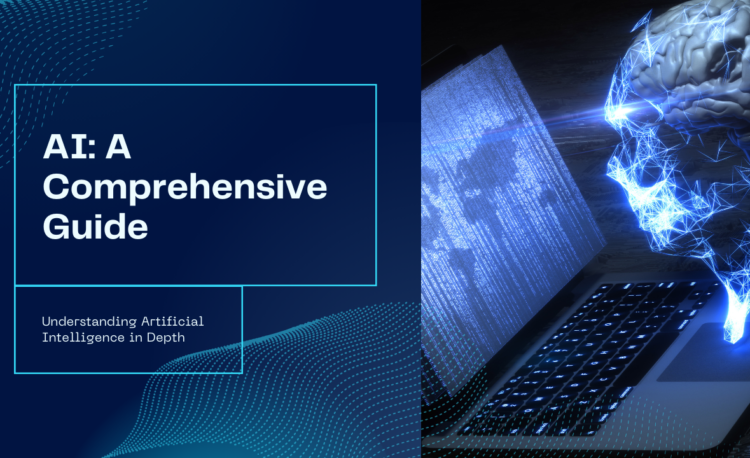Artificial Intelligence, or AI, is a revolutionary technology that has garnered significant attention in recent years. In this comprehensive guide, we will delve into the intricacies of AI, from its definition and historical evolution to its practical applications in everyday life, basic terminology, myths, and future implications.
What is AI?
AI refers to the simulation of human intelligence in machines that are programmed to think and behave like humans. Unlike traditional computer programs, AI systems can analyze vast amounts of data, recognize patterns, and make decisions with minimal human intervention. This ability to learn from experience and adapt to new inputs makes AI a powerful tool in various industries, from healthcare and finance to entertainment and transportation.
History and Evolution of AI
The concept of AI is not new and has roots dating back to ancient civilizations, where myths and folklore often featured artificial beings with human-like intelligence. However, the formal study and development of AI began in the mid-20th century. The Dartmouth Conference in 1956 is widely recognized as a pivotal moment in AI history, where researchers and scientists first proposed the idea of creating machines that could exhibit human-like reasoning.
Early AI research focused on symbolic AI, which involved programming computers to manipulate symbols based on rules. However, progress was limited due to the computational power available at the time. It wasn’t until the advent of machine learning and neural networks in the 1990s that AI experienced a resurgence.
AI in Everyday Life
Today, AI has become an integral part of our daily lives, often without us even realizing it. Here are some common applications of AI that you may encounter:
- Virtual Assistants: Voice-activated assistants like Siri, Alexa, and Google Assistant use natural language processing (NLP) to understand and respond to voice commands. They can perform tasks such as setting reminders, answering questions, and controlling smart home devices.
- Recommendation Systems: Platforms like Netflix, Amazon, and Spotify use AI algorithms to analyze user preferences and behavior. This data is then used to recommend movies, products, or music tailored to individual tastes.
- Healthcare: AI is transforming healthcare with applications ranging from medical imaging analysis to personalized treatment plans. AI-powered algorithms can detect anomalies in medical images, assist in diagnostics, and even predict patient outcomes based on historical data.
- Autonomous Vehicles: Self-driving cars use AI to perceive their environment, navigate roads, and make decisions in real-time. AI algorithms process data from sensors, cameras, and radar systems to ensure safe and efficient driving.
- Natural Language Processing: AI enables machines to understand, interpret, and generate human language. Applications include language translation, sentiment analysis, and chatbots that provide customer support.
Basic AI Terminology
To fully grasp AI’s capabilities and applications, it’s essential to understand some basic terminology:
- Machine Learning (ML): A subset of AI that enables systems to learn from data and improve their performance over time without being explicitly programmed. ML algorithms identify patterns in data and make predictions or decisions based on these patterns.
- Deep Learning: A specialized form of ML that uses artificial neural networks with multiple layers to model complex patterns. Deep learning has been instrumental in advancements such as image and speech recognition.
- Neural Networks: Computational models inspired by the structure and function of the human brain. Neural networks consist of interconnected nodes (neurons) organized in layers. They are used in deep learning to process and analyze data.
- Supervised Learning: A type of ML where the algorithm is trained on labeled data. The algorithm learns to map inputs to outputs based on examples provided during training.
- Unsupervised Learning: ML where the algorithm learns to identify patterns and relationships in unlabeled data. Unsupervised learning is used for tasks such as clustering and anomaly detection.
- Reinforcement Learning: A type of ML where an agent learns to make decisions by interacting with an environment. The agent receives feedback in the form of rewards or penalties based on its actions, allowing it to improve its performance over time.
Myths and Facts about AI
Despite its advancements, AI is often misunderstood. Let’s debunk some common myths and clarify the facts:
- Myth: AI will replace all human jobs. Fact: While AI may automate certain tasks, it also creates new job opportunities in AI development, maintenance, and oversight. Human creativity, empathy, and critical thinking are irreplaceable.
- Myth: AI is infallible and always accurate. Fact: AI systems are only as good as the data they are trained on. Biased data or incomplete datasets can lead to biased decisions. Continuous monitoring and ethical considerations are essential in AI development.
- Myth: AI will achieve consciousness and emotions like humans. Fact: Current AI systems lack consciousness and emotions. They operate based on algorithms and data inputs, without self-awareness or subjective experiences.
- Myth: AI development is uncontrollable. Fact: AI development is guided by human researchers, developers, and policymakers. Regulations and ethical guidelines are crucial to ensure AI is developed and used responsibly.
Conclusion
In conclusion, Artificial Intelligence is a transformative technology with the potential to revolutionize industries and enhance human capabilities. From its historical roots to its current applications and future possibilities, AI continues to evolve at a rapid pace. Understanding the fundamentals of AI, including its terminology, applications, and ethical considerations, is essential for navigating the AI-driven future.
As AI technology progresses, it’s crucial to address challenges such as data privacy, bias in algorithms, and the ethical implications of AI deployment. By fostering responsible AI development and innovation, we can harness the full potential of AI while ensuring it benefits society as a whole.
Stay informed and engaged in the conversation about AI and its impact on our world. If you found this guide informative, don’t forget to subscribe to our blog for more insights into emerging technologies and trends.

